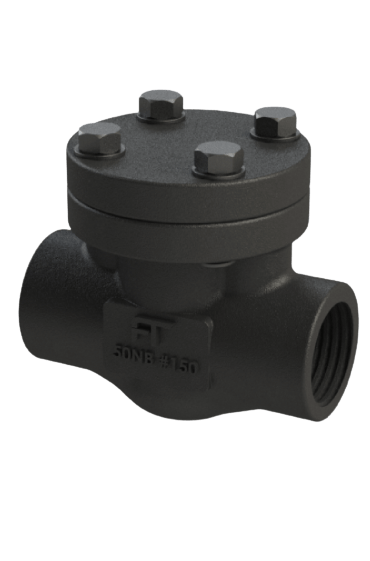Dual plate check valves, also known as double disc check valves, are widely used in industrial piping systems to prevent reverse flow. Their design consists of two spring-loaded plates hinged on a central shaft, allowing fluid to pass in the forward direction and instantly closing when the flow reverses. This ensures efficient non-return protection with minimal pressure drop.
While these valves are commonly installed in horizontal pipelines, vertical installation is often required in modern piping layouts. However, vertical mounting introduces unique considerations that must be addressed to ensure reliable performance and long service life.
Key Considerations for Vertical Installation
-
Flow Direction
The valve must be positioned in line with the flow arrow marked on the body. Incorrect orientation can result in malfunction or even damage. -
Effect of Gravity
In vertical pipelines, gravity acts differently on the valve plates. For upward flow, gravity generally assists closure, whereas in downward flow, it can delay opening or cause instability. -
Spring Force
The springs must be strong enough to close the plates quickly regardless of gravity’s effect. Proper spring tension is essential to avoid reverse flow and valve slamming. -
Debris Accumulation
In vertical pipelines, especially with upward flow, particles or sediment may settle in the valve body and obstruct plate movement. Strainers and periodic cleaning help reduce this risk. -
Hinge Orientation
The orientation of the hinge shaft is critical. If positioned incorrectly, the plates may not swing smoothly, causing wear, leakage, or noisy operation.
Vertical Installation Types
-
Upward Flow (Bottom to Top)
This is the preferred method of vertical installation. The medium pushes the plates open naturally, and gravity assists in plate closure when the flow stops. -
Downward Flow (Top to Bottom)
Less common and more challenging, as gravity resists plate opening. Special design considerations, stronger springs, or alternative valve types may be necessary for reliable operation.
Installation Guidelines
-
Inspection Before Installation
-
Check for damage during transport.
-
Ensure plates and springs move freely.
-
Clean any dust, oil, or foreign particles.
-
-
Confirm Orientation
-
Match the valve’s flow arrow with the actual system flow.
-
Verify hinge position according to manufacturer guidelines.
-
-
Piping Alignment
-
The pipeline should be properly supported so the valve does not bear the weight of the system.
-
Avoid misalignment, as it may distort the body and prevent proper sealing.
-
-
Mounting the Valve
-
Insert the valve carefully between flanges, ensuring the plates remain centered.
-
Tighten flange bolts evenly in a criss-cross pattern.
-
-
Testing
-
Slowly pressurize the line and check for leaks.
-
Observe the valve operation under actual flow to confirm smooth opening and closing.
| Challenge | Risk | Solution |
|---|---|---|
| Sediment buildup | Interferes with plate closure | Install strainers, schedule cleaning |
| Delayed closure | Backflow or slamming | Ensure correct spring rating |
| Vibration or chatter | Plate wear and noise | Maintain proper flow velocity and alignment |
| Maintenance difficulty | Hard to inspect plates | Provide access points or periodic inspection |
Best Practices
-
Use vertical installation primarily for upward flow applications.
-
Always ensure clean fluid conditions by installing strainers upstream.
-
Schedule regular inspections to prevent debris buildup.
-
Select a valve with spring-assisted closure for quick and reliable operation.
-
Confirm design compatibility with the pipeline before installation.
Conclusion
Dual plate check valves can be installed in vertical pipelines, provided that correct orientation, proper spring design, and preventive measures against debris are observed. Upward flow is the most reliable vertical configuration, while downward flow should only be considered when the valve is specifically designed for such service. With proper installation and maintenance, these valves deliver dependable backflow prevention, low energy loss, and long operational life.











